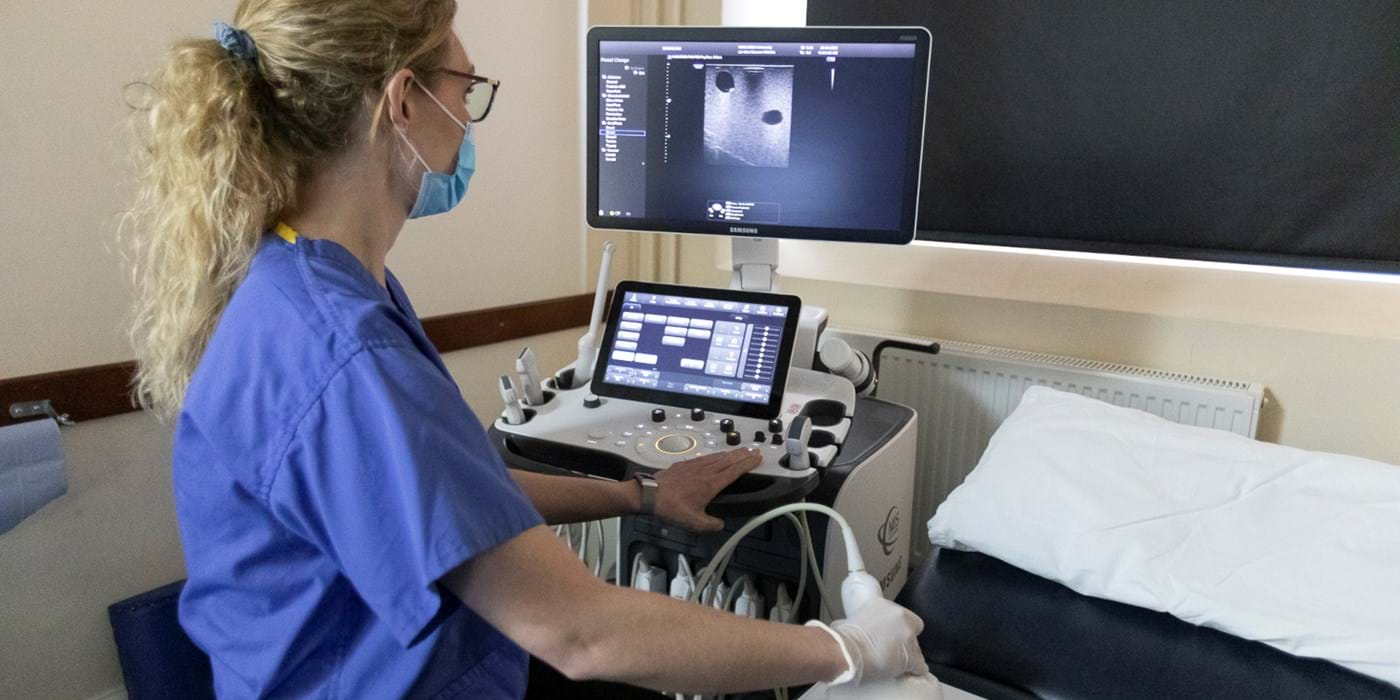Explainer: MSc Breast Imaging

Our new MSc Breast Imaging course has been designed by Specialist Breast Sonographer, Megan Hawthorn to respond to the needs of the NHS workforce. The course is designed for Allied Health Professionals, including Sonographers, Mammographers, specialist Nurses and Doctors within the breast imaging field, who are looking to specialise in breast imaging and work towards becoming Advanced Clinical Practitioners.
In this article, Megan explains more about what the course involves, what makes the MSc Breast Imaging course at AECC University College unique, and who should apply.
Register Your Interest in our MSc Breast Imaging course.
Who Should Apply?
“This course is particularly relevant to Diagnostic Radiographers, who already hold an undergraduate degree in Diagnostic Imaging and are working in a hospital.
“It’s common for Diagnostic Radiographers with an interest in breast imaging to follow two main routes of progression and that’s into Mammography and Ultrasound. This course is the next step for further specialism in breast imaging.
“I believe a unique selling point of our MSc Breast Imaging course is that it is equally well designed for both Sonographers and Mammographers. It takes into account the modules that Sonographers have already completed due to their previous training.
“Sonographers have already studied modules such as Ultrasound Physics, whereas for mammographers and nurses this is usually a new skill., Our MSc Breast Imaging course allows students to evidence prior learning and transfer credits across meaning sonographers will not have to repeat this learning, but allows mammographers and other AHP’s to complete this separately. This inclusion of different professional backgrounds was really important for me when writing this course.
“Applicants to the MSc Breast Imaging course need to have a placement site arranged before applying to study with us. Students on the course will study with us part-time, alongside the work that they are already doing, generally at their placement site.”
Meeting the Four Pillars of Advanced Practice
“Students on the course will generally spend three years with us if they are new to the profession. They will generally complete two clinical units in the first year, two further clinical units in the second year, and then the dissertation in the third year and exit with a Masters level award. However, there are some students who may only want to complete one or two clinical units.
“Many of our applicants will be working towards becoming a Consultant Radiographer. There is a recognised leadership framework of skills that they may be working towards. There are four pillars to this: clinical practice, leadership and management, education, and research.
“Our MSc Breast Imaging course aims to meet aspects of the four pillars of this framework. If applicants choose our additional units that include Professional Development, Leadership and Interprofessional working and Evidence Based Practice this will give student the opportunity to develop and evidence their leadership and management skills needed for Consultant Radiographer posts; this is popular with applicants who might have secured a Trainee Consultant post within the NHS.
“I think this is another key advantage of this course at AECC University College as this isn’t a standard feature of breast courses generally.
“It’s also possible to take individual units with us, rather than taking the whole course, for example Breast Ultrasound, Imaging Guided Breast Intervention and Mammography Image Reading.”
Opportunities in Breast Imaging
“Specialising in Breast Imaging allows you to expand your practice and skill set into diagnosis and interventional work and become more involved in the patient pathway. It is a level of practice characterised by a high degree of autonomy and complex decision making
“This advancement of the radiography profession gives autonomous working, flexibility and greater responsibility to those motivated and enthusiastic radiographers who wish to progress to this level..
“There has been a heightened awareness of breast cancer in recent years. There have been some high-profile celebrity cases and we have seen an increase in the numbers of patients coming forward to their GP and being referred on for imaging.
“Radiographer led Breast Clinics have facilitated increased capacity and patient throughput, improved use of medical staff time, increased flexibility in response to demand and most notably with no compromise to the quality of service delivered.”
Find out more about our MSc Breast Imaging course.
Read more about Megan Hawthorn.

Above: Megan Lines